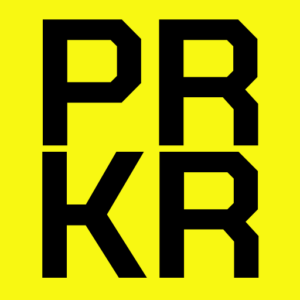To get press coverage for your small business, start by crafting a compelling story that highlights your unique aspects. Research and identify local and niche media outlets that fit your audience’s interests. Build relationships with journalists by engaging with them on social media and sharing their content. When you pitch, tailor it to each outlet’s style and interests, and focus on newsworthy elements. Don’t forget to include clear, high-quality visuals to boost your chances. By effectively utilizing tools and strategies, you can enhance your outreach. Stay tuned for more tips on maximizing your media exposure.
Understanding the Importance of Press Coverage for Small Businesses

Why does press coverage matter so much for small businesses? For your startup, securing media coverage can dramatically increase brand awareness and credibility.
With effective media outreach, you can connect with relevant journalists who might be interested in your story idea, leading to valuable news coverage. This isn’t just about getting attention; it’s about establishing trust with potential customers and investors.
Additionally, a well-crafted PR strategy can shape how your organization communicates and interacts with audiences, further enhancing your visibility. Press coverage for your startup can provide free publicity that can translate into increased sales and growth.
You’ll want to build relationships with journalists, as these connections can help you navigate the media landscape more effectively.
To enhance your chances, here are some tips to get started: identify your target audience and tailor your messaging accordingly.
Focus on crafting compelling pitches that resonate with specific publications and their readers. Don’t underestimate the power of local and niche media; they can be crucial for your business’s visibility.
Researching and Identifying Target Media Outlets

To get effective press coverage, you need to start by analyzing your target audience and understanding their preferences. This includes recognizing key demographics such as age, gender, and location to tailor your outreach effectively.
Once you’ve got a clear picture, you can build a media list that includes outlets most likely to resonate with them. This targeted approach ensures your outreach is both strategic and impactful, aligning your media relations efforts with audience interests for greater engagement.
Analyzing Your Target Audience
Understanding your target audience is crucial for effective press coverage, as it helps you tailor your outreach to resonate with their interests and preferences.
Start by analyzing your target audience to identify what types of media they consume. This knowledge will guide your approach when seeking media exposure for your business. Consider where your audience spends their time—whether that’s local newspapers, online blogs, or social media platforms.
As a business owner, it’s essential to create press releases that include key information that journalists find newsworthy.
Establish relationships with journalists who cover topics relevant to your industry; this makes it easier to get their attention when you pitch your story. Don’t forget to help a reporter by providing them with angles or insights that complement their previous work.
Compile a list of media contacts that align with your audience’s interests. This list will be invaluable when you’re ready to reach out.
Building a Media List
Now that you’ve analyzed your target audience, it’s time to build a media list that aligns with their interests.
Start by identifying local newspapers and business media outlets that cater specifically to your niche. Use tools like Vuelio or JournoLink to find journalists who cover topics related to your industry. This is an effective way to get coverage, as journalists receive countless pitches, so yours should stand out.
Compile a list of relevant contacts, focusing on those who’ve a history of covering similar stories.
When you’re ready to pitch your story, tailor your press kit to highlight why your news matters to their audience. Include unique insights that make your story compelling.
Crafting a Compelling Story and Pitch

To capture media attention, you need a strong business story that resonates with your audience. Understanding the importance of timing, such as aligning your pitch with current events, can significantly enhance your chances of getting noticed.
Tailoring your pitch to match different outlets can make all the difference in getting your story heard. Focus on what makes your business unique and relevant to current trends, and you’ll increase your chances of coverage.
Additionally, emphasizing key elements of a successful pitch can help your narrative stand out.
Developing a Strong Business Story
A compelling business story can be the difference between getting noticed and being overlooked in a crowded marketplace. To create an interesting story, focus on your mission and vision, highlighting what makes your business unique.
This is a great way to build media relations and capture the attention of journalists searching for fresh content.
When you tell your story, ensure it resonates with your target audience and aligns with current business news trends. The best ways to get media coverage often stem from showcasing how your business addresses a real problem or fills a significant gap in the market.
Consider what makes your story newsworthy. Incorporate elements like customer success stories, innovative products, or community impacts, as these can grab media attention.
Don’t hesitate to share your journey, including the challenges and triumphs, as this authenticity can engage readers more deeply.
Tailoring Pitches to Different Outlets
Customizing your pitches for different media outlets is crucial for capturing attention and increasing your chances of coverage. When you’re tailoring pitches, you need to ensure that your story resonates with the specific audience of each outlet.
Journalists receive hundreds of emails daily, so it’s essential to make your email pitches stand out. Start by researching the media outlets you’re targeting—understand their style, tone, and what types of stories they cover.
To get the coverage you need, focus on why they’d be interested in your story. Highlight unique angles or insights that align with their audience’s interests. This not only shows you understand their needs but also positions your story as a great fit for the publication.
Building Relationships with Journalists

Building relationships with journalists starts with connecting on social media and engaging with their content.
Attend industry events where they’re present, and take the opportunity to introduce yourself and share your story.
These interactions can lay the groundwork for future media coverage when you need it most.
Connecting with Journalists on Social Media
Social media platforms like Twitter and LinkedIn offer valuable avenues for establishing connections with journalists. As a startup founder, you can leverage these social media channels to get attention and build relationships that may lead to media mentions and secure press coverage.
Start by following journalists who cover your industry; this gives you insight into their interests and the stories they share.
Engage with journalists by liking, sharing, or commenting on their posts. Share relevant content that aligns with their topics to show you’re invested in their work. Be genuine in your interactions; this fosters trust and can make you memorable when it’s time to pitch your story.
Utilize these tips for getting noticed: personalize your outreach by referencing their previous articles and explaining why your story aligns with their audience’s interests. This approach not only helps you gain media coverage but also positions you as a valuable resource.
Attending Industry Events
Attending industry events is a fantastic way to connect with journalists and build meaningful relationships. These gatherings offer invaluable opportunities for face-to-face connections, enabling you to present your brand or product directly to the media. By engaging with reporters in person, you can increase the chances of them writing about your product or service, which can lead to enhanced media coverage.
Here’s a quick overview of the benefits of attending industry events:
| Benefits | Details |
|---|---|
| Networking | Meet journalists and establish rapport. |
| Visibility | Showcase your brand to potential customers. |
| Insight | Gain feedback directly from media professionals. |
| Story Ideas | Discuss your product, leading to potential pitches. |
When you interact with reporters at these events, you’re not just another email in their inbox. You’re a person they’ve met, which can significantly boost your chances of securing press coverage. Remember, building these relationships can open doors to various types of media coverage, ultimately benefiting your business in the long run.
Writing Effective Press Releases

When writing press releases, you want to include key elements that grab attention and convey your message clearly.
Visuals and supporting materials can enhance your release, making it more appealing to journalists.
Let’s explore how to structure your press release for maximum impact and engagement.
Key Elements of a Press Release
Crafting an effective press release hinges on a few key elements that can significantly impact its success. Start with a compelling headline; it’s your first impression. Follow this with a strong lead that succinctly summarizes the news. Then, develop the body, ensuring it’s concise and to the point, yet informative. Don’t forget to end with your contact information for easy follow-up.
Here’s a quick reference table to guide you:
| Element | Description |
|---|---|
| Headline | Grabs attention; should be engaging |
| Lead | Summarizes the news in one or two sentences |
| Body | Details the announcement, keeping it focused |
| Quotes | Adds credibility; insights from key stakeholders |
| Contact Info | Provides journalists with easy access to you |
Including Visuals and Supporting Materials
Including high-quality visuals and supporting materials in your press release can significantly enhance its appeal to media outlets. When you incorporate high-quality images and infographics, you not only bolster your storytelling but also improve the visual appeal of your content.
Media outlets are more likely to pick up your story when it’s visually engaging, as these elements help illustrate your message more effectively.
Consider using platforms like HARO to connect with journalists who appreciate strong visuals. Make sure your supporting materials, including graphics and images, align with your privacy policy to maintain transparency and professionalism.
These visuals can help journalists see the relevance of your press coverage, making their job easier and increasing your chances of getting featured.
Leveraging Online Tools and Platforms

To boost your press coverage efforts, consider using tools like HARO (Help a Reporter Out) to connect directly with journalists seeking sources.
Additionally, monitoring media mentions and trends can help you stay informed and refine your outreach strategy.
Using HARO to Connect with Journalists
HARO, or Help a Reporter Out, provides a unique opportunity for small businesses to connect directly with journalists seeking expert insights. By using this tool, you can gain media exposure and position yourself as an authority in your field.
Here’s how to maximize your HARO experience:
- Monitor your inbox: Sign up for HARO emails and check them regularly to find relevant queries.
- Craft compelling responses: Tailor your answers to fit the journalist’s needs, highlighting your expertise and unique perspective.
- Leverage social networks: Share your HARO mentions on your platforms to increase visibility and credibility.
Responding to HARO requests is one of the best ways to get your story out there. Many media outlets, including major media, utilize HARO to find sources, making it a valuable resource for securing press coverage.
Each mention can significantly enhance your brand’s reputation and reach. Don’t miss out on this chance to connect with journalists and showcase your business.
With persistence and well-crafted pitches, you can effectively use HARO to elevate your media presence.
Monitoring Media Mentions and Trends
Staying on top of media mentions and trends is crucial for your small business’s visibility and reputation. By leveraging tools like Google Alerts and social media monitoring platforms, you can track mentions of your brand and identify relevant trending topics. This proactive approach helps you stay informed, so when opportunities arise, you’ll be more likely to engage effectively.
It’s important to focus on the platforms where your target audience hangs out. Use social media listening tools to gauge sentiment and find out what discussions matter most. This insight can guide your media strategy and help tailor your pitches.
Additionally, consider setting up keyword alerts for your industry or competitors. This way, you can spot emerging trends early, giving your startup a competitive edge. As an entrepreneur, you can’t operate a startup without understanding the landscape around you.
The best ways to maximize your media presence involve consistent monitoring and timely responses to relevant topics. By keeping your ear to the ground, you can position your business as a thought leader and increase your chances of gaining valuable media coverage.
Measuring the Success of Your Press Coverage

To truly gauge the effectiveness of your press coverage, you need to set clear goals and key performance indicators (KPIs) upfront.
By analyzing the results against these metrics, you can see what’s working and what’s not.
This will allow you to adjust your strategy for even better outcomes in the future.
Setting Clear Goals and KPIs
Setting clear goals and KPIs is essential for measuring the success of your press coverage efforts. By establishing specific objectives, you can effectively track your progress and adjust your strategies as needed.
Here are three key areas to focus on:
- Lead Generation: Set a target for the number of leads you want to generate through your press coverage. This will help you gauge the effectiveness of your outreach.
- Media Mentions: Define how many media mentions or pieces of coverage you aim to secure within a specific timeframe. This will provide insight into your visibility in the market.
- Audience Engagement: Measure the level of engagement from your target audience, such as website visits, social media shares, or newsletter sign-ups, to assess the impact of your press efforts.
Analyzing Results and Adjusting Strategy
Analyzing the results of your press coverage is crucial for refining your outreach strategy. Start by measuring key performance indicators (KPIs) that align with your initial goals. Did your coverage generate the expected leads, increase brand awareness, or enhance your reputation?
Use tools like Google Analytics to track website traffic and social media engagement resulting from your press efforts.
Next, assess the quality of your coverage. Are the articles published in reputable outlets? Did they convey your brand message effectively? Gather feedback from your audience through surveys or direct outreach, asking what they found compelling or confusing.
If certain aspects of your strategy fell short, don’t hesitate to adjust. For instance, if you aimed for local media but missed the mark, consider targeting more relevant publications in your area.
Experiment with different pitches and formats, and monitor which resonate best with journalists and your audience.
Conclusion
In conclusion, securing press coverage for your small business is all about strategy and connection. By understanding your audience, crafting compelling stories, and building relationships with journalists, you can boost your visibility and credibility. Don’t underestimate the power of a well-written press release or the impact of online tools. With persistence and a thoughtful approach, you can effectively leverage media exposure to drive your business forward and achieve your goals. Start making those connections today!


